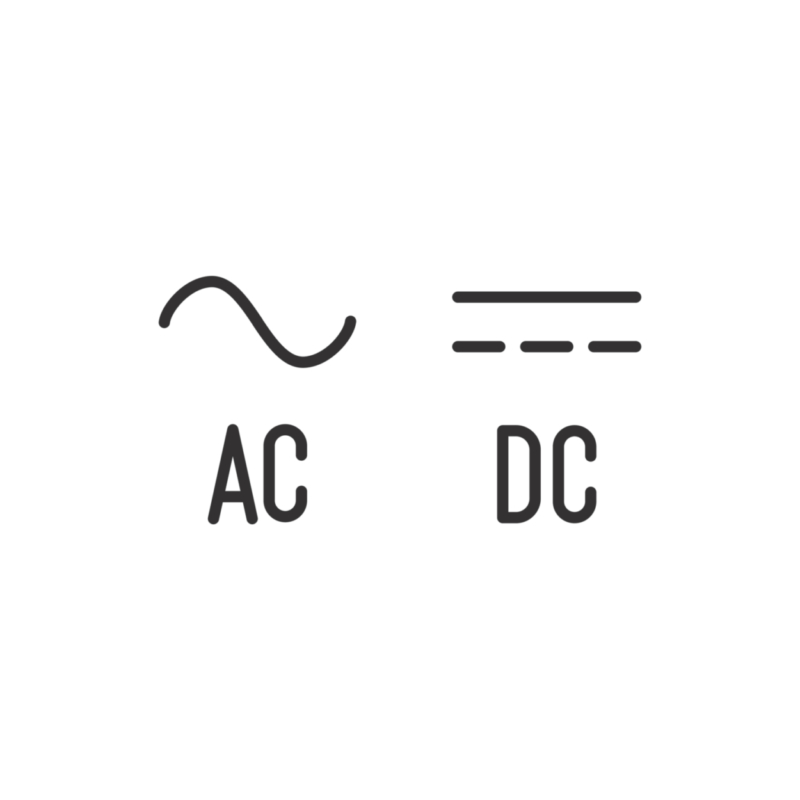
AC vs. DC: Understanding Electrical Power and Its Applications
Electrical Power AC vs DC Alternating Current Direct Current Electricity Power Systems Energy Tech Explained Engineering
AC vs. DC: Understanding Electrical Power and Its Applications
Electrical power is a fundamental part of modern life, driving everything from household appliances to industrial machinery. But not all electrical power is the same. It comes in two primary forms: Alternating Current (AC) and Direct Current (DC). In this post, we'll explore the differences between AC and DC, their unique characteristics, and how they are used in various applications.
What is AC (Alternating Current)?
Alternating Current (AC) is a type of electrical current in which the flow of electric charge periodically reverses direction. In most cases, AC power is delivered to homes and businesses through power lines, where the current alternates back and forth at a standard frequency (usually 50 or 60 times per second, or 50/60 Hz).
The primary advantage of AC is that it is easier to transmit over long distances with minimal energy loss. This is because AC voltage can be easily increased or decreased using transformers, making it more efficient for distributing power across large areas.
What is DC (Direct Current)?
Direct Current (DC) is a type of electrical current where the flow of electric charge is unidirectional, meaning it flows in a single direction. DC power is typically used in battery-powered devices, electronics, and applications where a stable and constant voltage is required.
Unlike AC, DC is not easily transmitted over long distances without significant energy loss. However, it is ideal for applications that require a steady and continuous supply of electricity, such as charging batteries, powering electronic circuits, and running small motors.
Key Differences Between AC and DC
- Direction of Flow: In AC, the current changes direction periodically, while in DC, the current flows in only one direction.
- Voltage Transmission: AC voltage can be easily transformed to higher or lower voltages, making it suitable for long-distance power transmission. DC voltage is more stable but harder to transform efficiently.
- Usage: AC is commonly used for powering homes, businesses, and industrial facilities, while DC is often used in battery-powered devices, electronics, and small-scale applications.
- Generation: AC power is typically generated by power plants and distributed through the grid, while DC power is generated by batteries, solar panels, and DC generators.
Applications of AC Power
AC power is the standard for most residential, commercial, and industrial power systems. Some common applications of AC power include:
- Household Appliances: AC power is used to run refrigerators, air conditioners, washing machines, and other household appliances.
- Lighting: Most indoor and outdoor lighting systems, including streetlights and building lights, operate on AC power.
- Industrial Equipment: AC power is used in factories and manufacturing plants to power large machinery, conveyor belts, and other equipment.
- Power Distribution: AC is used for the transmission of electricity from power plants to homes and businesses via the electrical grid.
Applications of DC Power
DC power is commonly used in low-voltage and portable applications. Some common applications of DC power include:
- Battery-Powered Devices: DC power is used in smartphones, laptops, flashlights, and other battery-operated gadgets.
- Electronics: Most electronic circuits and components, such as microcontrollers, sensors, and LEDs, operate on DC power.
- Automotive Systems: Cars, trucks, and electric vehicles use DC power for their electrical systems, including the battery, lighting, and infotainment systems.
- Solar Power: Solar panels generate DC power, which is then converted to AC for use in homes or stored in batteries for later use.
Converting AC to DC and Vice Versa
In many applications, it is necessary to convert AC power to DC power or vice versa. Devices called rectifiers are used to convert AC to DC, which is common in power adapters for electronics. Conversely, inverters are used to convert DC to AC, which is essential for integrating solar power systems into the AC grid or powering AC devices from a DC battery.
The Future of AC and DC Power
While AC remains the dominant form of power distribution, the increasing use of renewable energy sources, electric vehicles, and advanced electronics is driving greater demand for DC power. Hybrid systems that integrate both AC and DC are becoming more common, offering greater flexibility and efficiency in energy management.
Understanding the differences between AC and DC power helps us appreciate how these two forms of electricity work together to power our modern world, from the grid that lights our homes to the batteries that keep our devices running.
Thank you for reading, and stay tuned for more insights and tips as we continue our tech journey together!